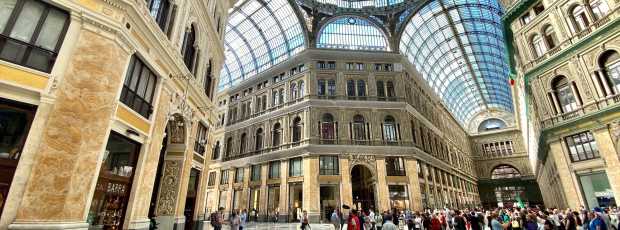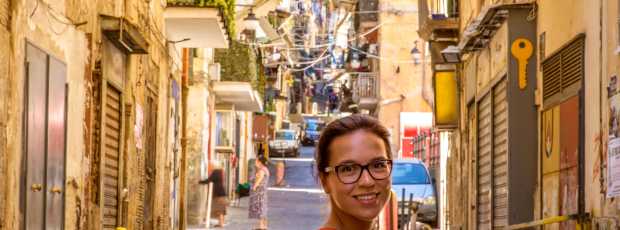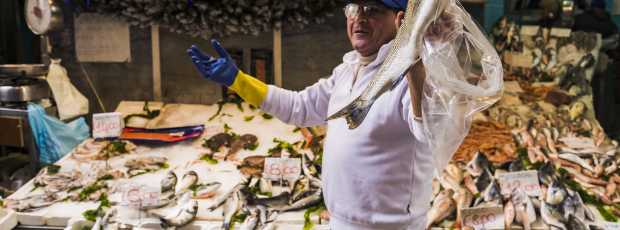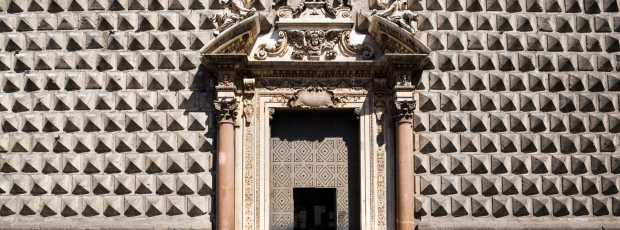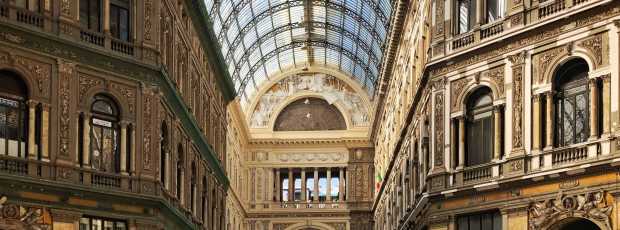
10 Hidden gems in Naples
Every city has some secret gems that are waiting to be uncovered if you’re willing to head off the beaten track. In Naples, you’ll soon realize that the most valuable gems are deeply connected with the soul of the city. This soulful city is a short two-hour trip away from Rome, on the northern edge of the Bay of Naples. You’ll be captivated by the vibrancy, historical richness, artistic treasures, mouthwatering food, and authentic Italian vibes. Here are 10 hidden gems to help you explore off the beaten path like a local.
Lago D’averno

Lago D’averno
Some may think the Campi Flegrei area is not particularly well maintained, but Lago D’averno is a magical exception. This peaceful green oasis is adored by locals who stop by for a stroll or to play sports on the greens, or to simply unwind in the sunshine. It was once considered the gate of hell in ancient times, but today it’s actually one of the most beautiful lakes in southern Italy. This lush area has been overtaken by nature and you’ll find Roman ruins dotted all over. Lago D’averno is the perfect hidden gem if you’re looking for somewhere to unwind.
Castello Aragonese di Baia

Castello Aragonese di Baia
Castello Aragonese di Baia is an old castle that dominates the entire Bay of Pozzuoli. It’s well-maintained and rich in Roman remains found in the area of Campi Flegrei. It’s a Naples gem well worth seeing and it continues to enchant everyone who has the opportunity to admire it, even if just from the outside. Although it’s not in most guide books it deserves the crowds with its magnificent view, great location, and really cheap admission fee.
Fontanelle Cemetery Caves

Fontanelle Cemetery Caves
Ok, so this might be one of the more unusual things to do in Naples and the idea of visiting a grave might sound spooky at first. However, Fontanelle Cemetery Caves is anything but spooky. It’s a place born out of a cult dedicated to caring for the ancient dead. It houses a collection of skulls from the 1656 plague, and of those who lost their lives in the bombings of WWII. There were taboos associated with this place until WWII, but then it served as a shelter from bombing! It’s a must-see if you’re looking for more of the unusual things to do in Naples.
Bourbon Tunnel

Bourbon Tunnel
Another underground hidden gem of Naples. The tunnel, which was at first left incomplete was identified as one of the key spots for Naples during WWII. As Naples was one of the most widely hit bombing destinations in Italy, the tunnel facilitated as an air-raid shelter for thousands. You can see artifacts like kids’ toys and gas masks and other wartime debris like fascist statues and vehicles used during the war. The tunnel, however, underwent a restoration in the 2000s and transformed into a hidden gem.
Toledo Art Station

Toledo Art Station
Another underground gem, we promise they’re not all underground. The Stazioni dell’Arte or the Art Stations project entrusted the vision of the city’s public transit stations to contemporary artists and architects in order to bring art to people’s everyday lives. The Toledo underground station stands out among the bunch and was even nominated as the most beautiful transit station in Europe. A different color has been used on each level of the station which represents a different theme relating to the city. You’ll find Toledo Underground Station under the iconic Via Toledo in the city's Spanish quarter. The other Art Stations are found along lines 1 and 6 of the Naples Metro if you have time to explore them all.
MUSA Anatomy Museum

MUSA Anatomy Museum
Naples is home to one of Italy’s most eccentric anatomy museums. The museum is packed with ancient Roman medical tools, anatomical sculptures made from wax, and mutated specimens preserved in formaldehyde. You’ll also find the skulls of victims who died when Mount Vesuvius erupted in Pompeii in 79 A.D. This museum is the perfect hidden gem in Naples to wander through with the whole family. You’ll be able to learn about the processes of cremation and fossilization; the evolution of medical equipment and the modernization of Neapolitan hospitals; and the cultivation of studies in physiology and pharmacology.
Church of Santa Luciella ai Librai

Church of Santa Luciella
You’ll find this gem hidden among the narrow alleys of the city center, near the famous Via dei Presepi. The church’s underground crypt was once used as a burial site. Members of the Neapolitan Cult of the Dead often came here to pray. They often offered prayers especially to the “skull with ears,” hoping this anatomical curiosity would act as a messenger between the worlds of the living and dead. The skull lives up to its name as it has two pieces of mummified cartilage, one on either side, which resembles ears. Look out for it watching over you as you explore.
Parco Sommerso di Gaiola

Parco Sommerso di Gaiola
Gaiola is mostly on the rocks, situated in front of two little islands. There’s a villa on one of the islands, which is said to be cursed and is therefore abandoned. This is the perfect place to visit if you’re looking to soak up some sunshine in the warmer summer months. The marine park offers some of the city’s cleanest waters in all of Italy and is a great place to escape the bustling tourist crowds. With fishing being banned here, many fish have returned which makes it a fantastic snorkeling spot too.
Procida Island

Procida Island
For a day out from Naples, head off to the small island of Procida, about one hour by ferry. The island is still a well-kept secret. The beautiful Marina Corricella is surrounded by picture-perfect houses that seem to have fallen into an artist’s color pot; they are painted in the brightest pastel pink, yellow, blue, and white. Get a feeling of local life as you wander along the cobbled streets, without the tourist crowds of more popular Ischia or Capri. Then you could enjoy a relaxing hour or two on one of the picturesque beaches. If you have time before the ferry heads back to Naples, have a seafood dinner offered in many of the Marina’s lovely restaurants.
National Railway Museum of Pietrarsa

National Railway Museum of Pietrarsa
If you’re a travel buff then you’re not going to want to miss this hidden gem. The National Railway Museum of Pietrarsa is housed in the old Bourbon workshops that were founded in 1840 at the command of Ferdinand II. You’ll be able to uncover the history of railways in Italy from the mid-19th century to today’s high-speed trains. There are lots of locomotives on display and much of the museum is covered, making it perfect if you’re in the area on a rainy day. It lies just to the side of the Naples-Portici railway line – Italy’s first railway line – and is very close to Naples itself.


